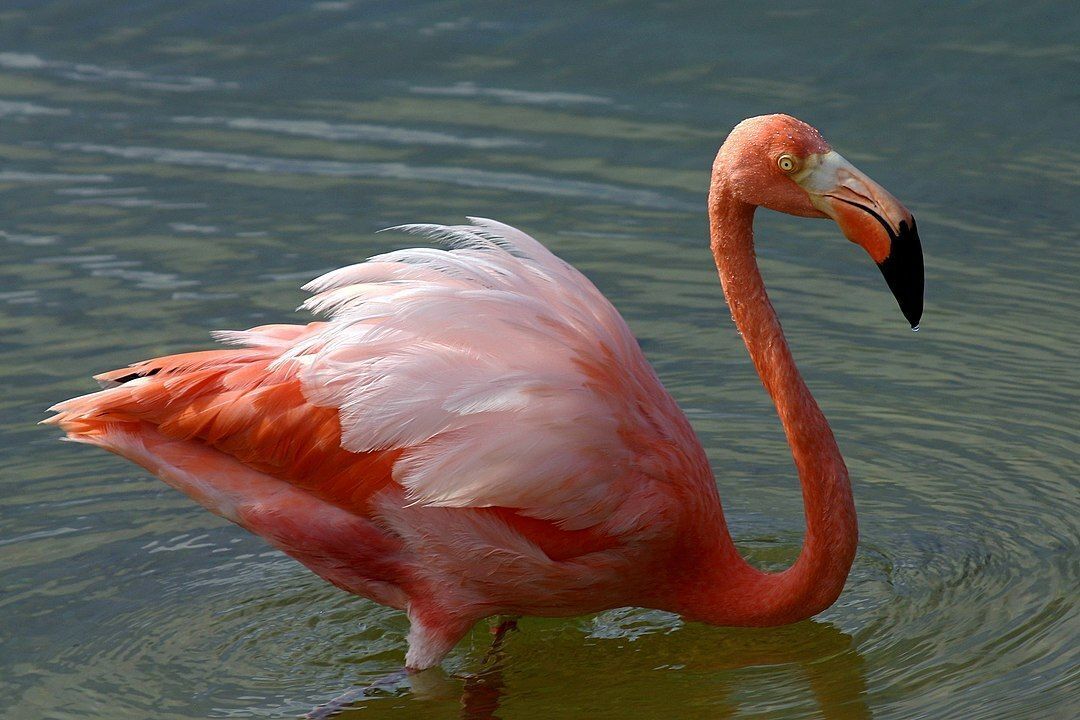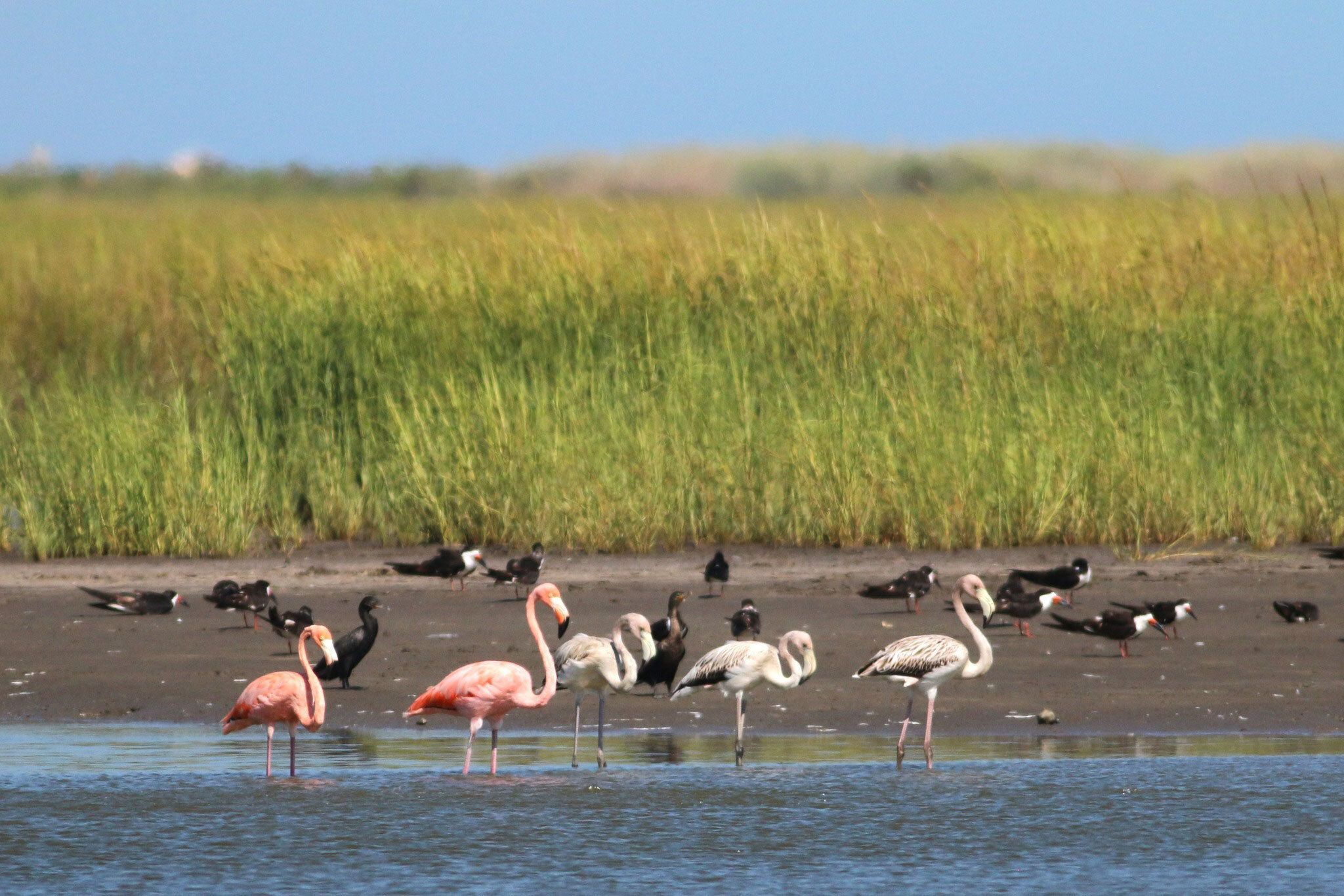American Flamingo
Phoenicopterus ruber
Family: (Phoenicopteridae) Flamingos
Seasonal Occurrence: Uncommon in our area.
Profile by Wyatt Egelhoff: Perhaps one of the most widely recognizable group of birds by both birders and non-birders alike, American Flamingos are sporadic visitors to Texas’ shores, and even rarer on the upper coast. Adults are hot pink, with strikingly contrasting black primary feathers. Their bright color, and distinctive shape has been immortalized in plastic lawn decorations since the 1950’s. Immatures are a dirty white color with similar black wings. They usually attain their trademark pink coloration by their second or third year. There are six species of flamingos globally, with two being native to the Old World and the remaining four primarily found in South America. Only the American Flamingo comes close to US shores as it ranges throughout the Caribbean and southern Gulf of Mexico (formerly to southern Florida). Wild American Flamingos are still encountered annually in bays of Everglades NP, but the closest breeding colonies are in Cuba and on the northern shores of the Yucatan Peninsula.
We were recently fortunate to host a group of five (two adults and three immatures) at our Bolivar Flats Shorebird Sanctuary in September 2023, visible in the tidal marsh adjacent the 17th St. Jetty in Port Bolivar. These were among the ~100 (that we know of) Flamingos that were displaced following the passage of Hurricane Idalia through the Florida panhandle. Much to the delight of birders, groups of Flamingos have been found in eight states, including Alabama, the Carolinas, Florida, Ohio, Tennessee, and Kentucky. Flamingos’ large body size and powerful flying capabilities make them good at dispersing, as evidenced by the breeding population in the Galapagos Islands, ~600 miles from the coast of South America. This is one of the largest and widest documented single displacement events for this species in the US. Factors for this phenomenon likely include not only the path, strength, and timing of Idalia itself, but also the recovery/growth of the American Flamingo population in the southern Gulf following increased local protection and study of breeding colonies. The increased capacity for birders to rapidly share information about sightings has also led to better coverage in the field overall.
Displacement of birds due to storms does not mean the individuals are doomed. Particularly for young flamingos, which typically will not breed until their second or third year of life, taking a detour to the productive bays and estuaries of the Texas coast won’t necessarily impact their ability to return to the Yucatan to breed. It is worth continuing to be on the lookout for wayward Flamingos as those birds moved to elsewhere in the US work their way back south. There’s always the possibility more will be found on the Texas Coast in the weeks (and months) to come.
-
Field Guide

© Charles J. Sharp - Own work, from Sharp Photography, sharpphotography, CC BY-SA 4.0, https://commons.wikimedia.org/w/index.php?curid=44938584

Bolivar Flats, September 2023, photo by Wyatt Egelhoff




















